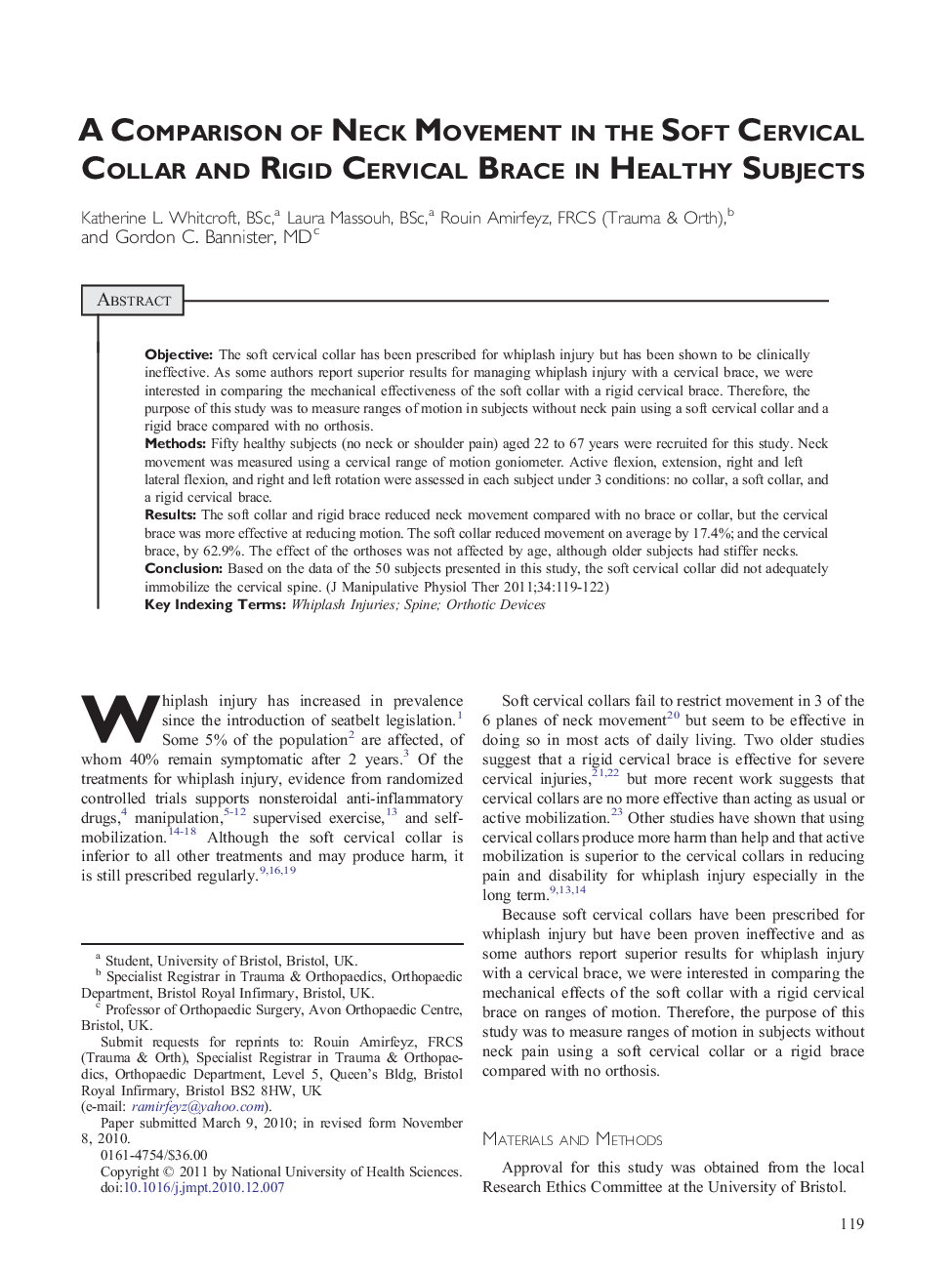| Article ID | Journal | Published Year | Pages | File Type |
|---|---|---|---|---|
| 2621100 | Journal of Manipulative and Physiological Therapeutics | 2011 | 4 Pages |
ObjectiveThe soft cervical collar has been prescribed for whiplash injury but has been shown to be clinically ineffective. As some authors report superior results for managing whiplash injury with a cervical brace, we were interested in comparing the mechanical effectiveness of the soft collar with a rigid cervical brace. Therefore, the purpose of this study was to measure ranges of motion in subjects without neck pain using a soft cervical collar and a rigid brace compared with no orthosis.MethodsFifty healthy subjects (no neck or shoulder pain) aged 22 to 67 years were recruited for this study. Neck movement was measured using a cervical range of motion goniometer. Active flexion, extension, right and left lateral flexion, and right and left rotation were assessed in each subject under 3 conditions: no collar, a soft collar, and a rigid cervical brace.ResultsThe soft collar and rigid brace reduced neck movement compared with no brace or collar, but the cervical brace was more effective at reducing motion. The soft collar reduced movement on average by 17.4%; and the cervical brace, by 62.9%. The effect of the orthoses was not affected by age, although older subjects had stiffer necks.ConclusionBased on the data of the 50 subjects presented in this study, the soft cervical collar did not adequately immobilize the cervical spine.
